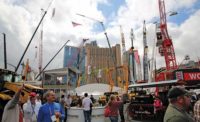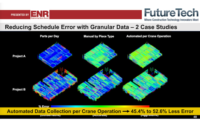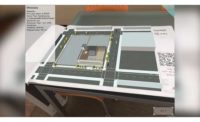Predicting wildfires and combating them, smart building sensors, 3D-printed building materials, building integrated fire safety systems that go beyond sprinklers and clean-room protection were among the topics discussed Oct. 13-15 at the Society of Fire Protection Engineers’ annual conference and exposition at the Sheraton Grand Resort at Wild Horse Pass near Phoenix.
The theme of the conference and expo was “a new frontier in fire safety challenges and opportunities.” Sessions included Wildfires at the Urban Interface, Smart Buildings and Safe Buildings and Characteristics of Firebrands from Selected Vegetative Fuels.
The latter was presented by North Carolina Agricultural and Technical State University lecturer Babak Bahrani, whose research showed burning firebrands (or embers) were more frequently being spread by more common medium-strength wind, rather than strong wind, and that wildfires in recent years have been spread that way. The study “A Framework to Facilitate Firebrand Characterization” was partially funded by the Insurance Institute for Business and Home Safety.
Another organization studying a problem, Northbrook, Ill.-based Underwriters Laboratories, gave attending fire protection engineers an update on the development of its additive manufacturing/3D printing building materials standard.
“UL 3401, Outline of Investigation for 3D Printed Building Construction,” is expected to be released by the end of the year. UL 3401 covers the evaluation of building structures and assemblies such as panels, walls, partitions, floors, ceilings, roofs, columns and beams that are fabricated using an additive manufacturing or 3D printing process.
The plan is to make UL 3401 a biannually updated standard for building material products, said Howard Hopper, UL’s regulatory services program manager. UL’s testing criteria will include both the products and their manufacturing process.
Hopper said UL plans to review that the building element evaluated matches the proposed construction, that the code-based test results are appropriate for the application, the material property results are acceptable under existing code and that the 3D-printing equipment, additive manufacturing material and the fabrication process of them are all in compliance.
The additive manufacturing “printers” themselves will be tested to ensure they can regularly produce building materials that are consistent with the samples provided. Hopper said construction documents, structural calculations and a UL report of findings will each be a part of the UL 3401 evaluation.
“We will evaluate the durability and integrity of 3D-printed building elements,” Hopper said. “We’re going to look at properties such as tensile strength, compression, impact resistance, creep, but also environmental conditions such as UV exposure, the freeze/thaw cycle, high/low temperature, water immersion and how these materials are affected as a result of the manufacturing process.”






Post a comment to this article
Report Abusive Comment